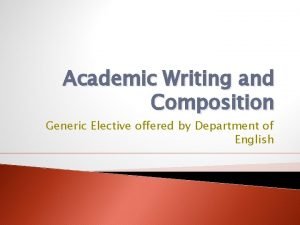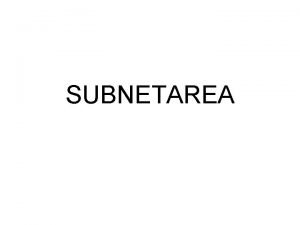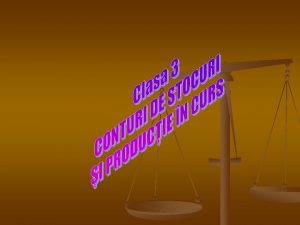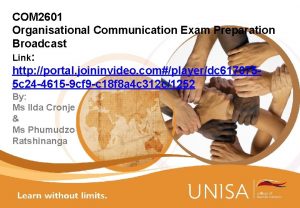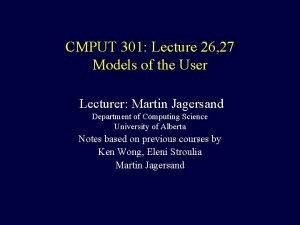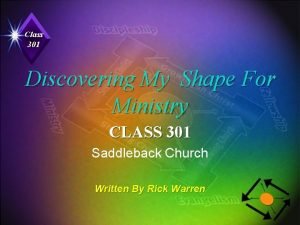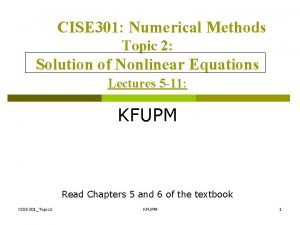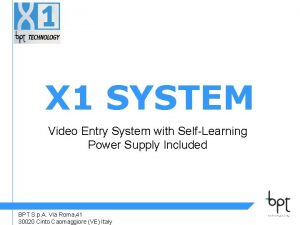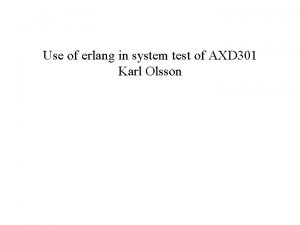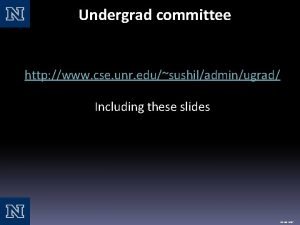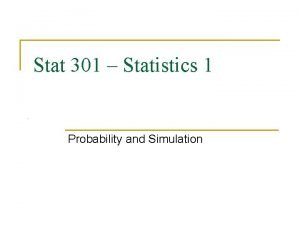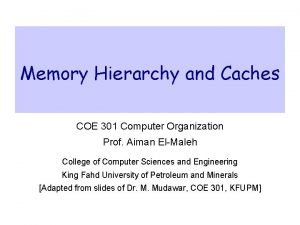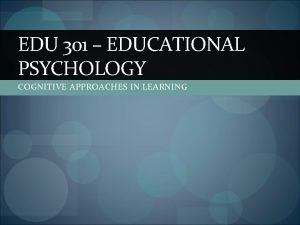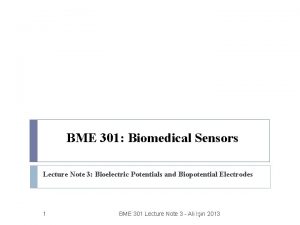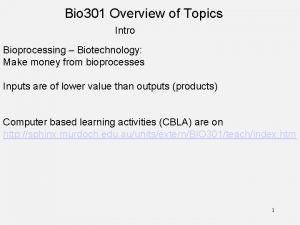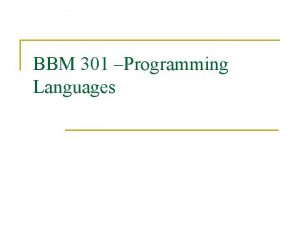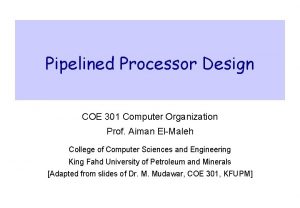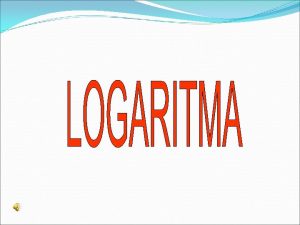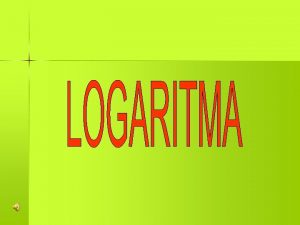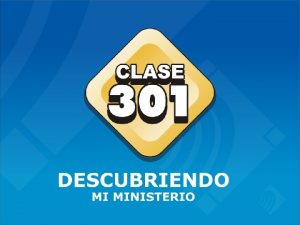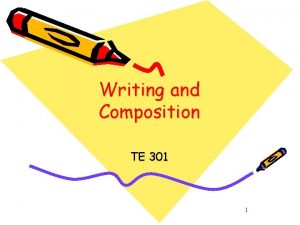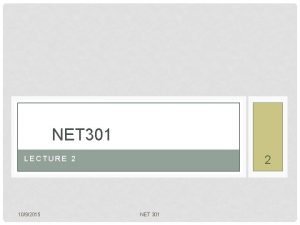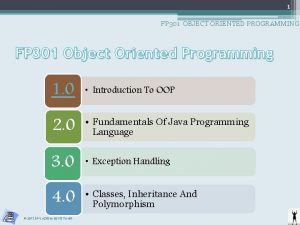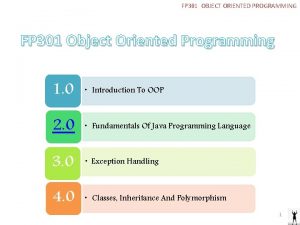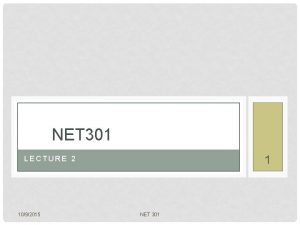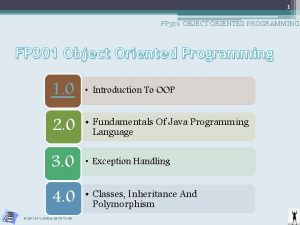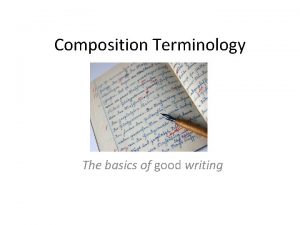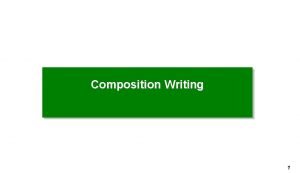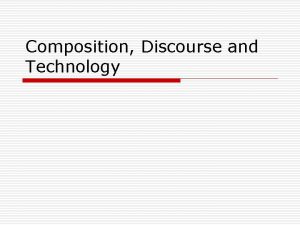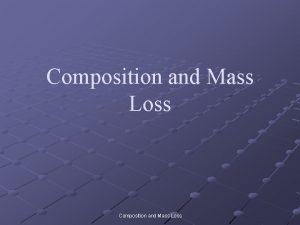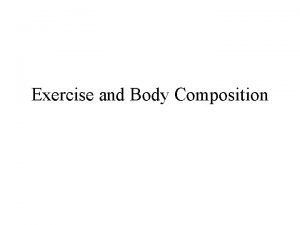Writing and Composition TE 301 Writing Writing is





























- Slides: 29

Writing and Composition TE 301

Writing “Writing is the process of communicating with written language. Readers work to get the writer’s meaning while writers work to make their meaning clear to readers” (p. 16). Resnick, L. B. , & Hampton, S. with the New Standards Primary Literacy Committee (2009). Reading and writing grade by grade, Revised edition. Newark, DE: International Reading Association.

Writing “Writing is a communicative act, writing is undeniably a social event between the writer and the audience…writing is also a cognitive act. ” Mc. Cutchen, D. (2006). Cognitive factors in the development of children’s writing. In C. A. Mac. Arthur, S. Graham, & J. Fitzgerald (Eds. ), The handbook of writing research (pp. 115 -130).

Writing is: - Communicative Social Cognitive Situated - Incorporating: - Writer/author Purpose Context Problem Solving - Audience - Permanence - Genre - Process - Strategies

Composition • Composition is the act of producing a piece of writing by bringing together writing processes, elements, strategies, and so on. • This usually includes a process of: – Planning – Production – Revision • The process is recursive and strategic. Pritchard, R. J. , & Honeycutt, R. L. (2006). The process approach to writing instruction: Examining its effectiveness. In C. A. Mac. Arthur, S. Graham, & J. Fitzgerald (Eds. ), The handbook of writing research (pp. 275 -290). New York: NY: Gilford Press.

Importance of Writing Why is writing so important? • In everyday life? • To literacy learning? • To all learning? • Benefits/Opportunities How would you explain and justify the importance of writing and writing instruction?

Writing Development • “Even very young children can interact with and observe writing in everyday life for everyday purposes. These early experiences will have consequences for later reading and writing” (p. 141). Bennett-Armistead, V. S. , Duke, N. K. , & Moses, A. M. (2005). Literacy and the youngest learner: Best practices for educators of children from birth to five. New York: Scholastic.

Writing Development • Writing develops by: – – Observing others write Experimenting with writing Scaffolding and instruction Experience with writing

Writing Development • Writing develops over time and follows common stages (e. g. , Sulzby’s developmental continuum of writing levels) • These levels are not definite or rigid • Children move between levels • Children should have experience with and exposure to a variety of writing opportunities and experiences Bennett-Armistead, V. S. , Duke, N. K. , & Moses, A. M. (2005). Literacy and the youngest learner: Best practices for educators of children from birth to five. New York: Scholastic.

Writing Development • Six levels of Sulzby’s (1985) continuum: – Drawing – Scribbling – Letter-like forms and/or units of letter strings – Estimated spelling – Conventional spelling Cited in: Bennett-Armistead, V. S. , Duke, N. K. , & Moses, A. M. (2005). Literacy and the youngest learner: Best practices for educators of children from birth to five. New York: Scholastic.

Writing Through Drawing • “One of the first ways that children express their thoughts and ideas on paper” (p. 144) • Believe one reads pictures, not words

Writing Through Scribbling • Typically between ages 2½-3 • Writing starts to differ from drawing, but they are still very intermingled. • May follow a structure children know (looks like a letter, list or story).

Writing Through Letterlike Forms and Letter Strings • Writing is made up of more than drawings and scribbles. • Letters and letterlike forms start to appear. • Writing may include strings of letters put together (that don’t necessarily form words or include all letters).

Writing Through Estimated Spelling • Writing includes more (conventionally formed) letters. • Children use knowledge of sounds to help in writing. • Estimated spelling: spelling based on knowledge of sounds and letter combinations.

Writing Through Conventional Spelling • Not expected until after formal school entry.

Early Writing Strategies • TRACING-writing over the letters someone else has written • COPYING-using the letters someone else has written as a prompt • GENERATING-producing one’s own letters without prompting Temple, C. Nathan, R. , Temple, F. , & Burris, N. A. (1993). The beginnings of writing. Needham Heights, MA: Allyn and Bacon.

Early Writing Strategy: Names Using Names to Learn to Write • First piece of writing for most children is their own names • Name teaches the child a repertory of letters – Generative principle allows the child to use a limited set of letters to fill a page – Flexibility principle allows the child to use a limited set of letters and embellish them to become new letters Temple, C. Nathan, R. , Temple, F. , & Burris, N. A. (1993). The beginnings of writing. Needham Heights, MA: Allyn and Bacon.

Writing Assessment Writing is assessed in different ways. Much of the way writing is assessed has to do with how writing is taught within that context. Some examples of ways to assess/teach writing: - PRODUCT (by only the finished product— conventions, spelling, etc. ) - PROCESS (the procedure taken to produce the text including: prewriting, and revision) - PROBLEM-SOLVING (strategies applied to communicate effectively to audience and purpose)

Stages of Spelling Development • The following slides outline five stages of spelling development quoting from: Bear, D. R. , Invernizzi, M. , Templeton, S. , & Johnston, F. (2008). Words their way: Word study for phonics, vocabulary, and spelling instruction. Upper Saddle River, NJ: Pearson Education. • The stages themselves were developed in earlier research and development work. » As with other stages, these are not rigid.

Emergent Stage of Spelling Development • “Scribbles letters and numbers • Lacks concept of word • Lacks letter-sound correspondence or represents most salient sound with single letters • Pretends to read and write” (p. 22) Bear, D. R. , Invernizzi, M. , Templeton, S. , & Johnston, F. (2008). Words their way: Word study for phonics, vocabulary, and spelling instruction. Upper Saddle River, NJ: Pearson Education.

Letter-Name-Alphabetic Stage of Spelling Development Early letter-name-alphabetic • “Represents beginning and ending sounds • Uses letter names to invent spellings • Has rudimentary or functional concept of word • Reads word by word in beginning reading materials” (p. 22) Bear, D. R. , Invernizzi, M. , Templeton, S. , & Johnston, F. (2008). Words their way: Word study for phonics, vocabulary, and spelling instruction. Upper Saddle River, NJ: Pearson Education.

Letter-Name-Alphabetic Stage of Spelling Development Middle to Late Letter Name. Alphabetic Stage: • “Correctly spells initial and final consonants and some blends and digraphs • Uses letter names to spell vowel sounds • Spells phonetically, representing all the salient sounds in a one-to-one, linear fashion. . . •

Letter-Name-Alphabetic Stage of Spelling Development Middle to Late Letter Name-Alphabetic Stage, continued: • Omits most silent letters and preconsonantal nasals in spelling (bop or bup for bump) • Fingerpoints accurately and can selfcorrect when off track • Reads aloud slowly in a word-by-word manner” (p. 23) Bear, D. R. , Invernizzi, M. , Templeton, S. , & Johnston, F. (2008). Words their way: Word study for phonics, vocabulary, and spelling instruction. Upper Saddle River, NJ: Pearson Education.

Within-Word Pattern of Spelling Development • “Spells most single-syllable, short vowel words correctly • Spells most beginning consonant digraphs and two-letter consonant blends • Attempts to use silent long vowel markers • Reads silently and with more fluency and expression • Writes more fluently and in extended fashion • Can revise and edit” (p. 23) Bear, D. R. , Invernizzi, M. , Templeton, S. , & Johnston, F. (2008). Words their way: Word study for phonics, vocabulary, and spelling instruction. Upper Saddle River, NJ: Pearson Education.

Syllables and Affixes Stage of Spelling Development • “Spells most single-syllable words correctly • Makes errors at syllable juncture and in unaccented syllables • Reads with good fluency and expression • Reads faster silently than orally • Writes responses that are sophisticated and critical” (p. 23) Bear, D. R. , Invernizzi, M. , Templeton, S. , & Johnston, F. (2008). Words their way: Word study for phonics, vocabulary, and spelling instruction. Upper Saddle River, NJ: Pearson Education.

Derivational Relations Stage of Spelling Development • “Has mastered high frequency words • Makes errors on low frequency, multisyllabic words derived from Latin and Greek • Reads with good fluency and expression • Reads faster silently than orally • Writes responses that are sophisticated and critical” (p. 24) Bear, D. R. , Invernizzi, M. , Templeton, S. , & Johnston, F. (2008). Words their way: Word study for phonics, vocabulary, and spelling instruction. Upper Saddle River, NJ: Pearson Education.

Approximate Grade Level Expectations for Specific Stages of Spelling Development Grade End-of-Year Spelling Stage Goal K Middle Letter Name-Alphabetic 1 Early Within Word Pattern 2 Late Within-Word Pattern 3 Early Syllable and Affixes 4 Middle Syllable and Affixes 5 Late Syllable and Affixes 6+ Derivational Relations From Page 44 of Bear, D. R. , Invernizzi, M. , Templeton, S. , & Johnston, F. (2008). Words their way: Word study for phonics, vocabulary, and spelling instruction. Upper Saddle River, NJ: Pearson Education.

Issues for English Language Learners What are some issues for ELLs? • Students may bring less exposure and experience in English (oral and written), including formulaic expressions and pragmatics for specific Englishspeaking contexts. • Instruction may (mistakenly) focus too much on form and not enough on meaning or vice-versa. • Teachers may devalue or not take into account the strengths and capabilities of ELL students, including their knowledge and writing abilities fro and in their native language. Ellis, R. (2008). Principles of instructed second language acquisition. Center for Applied Linguistics Digest, p. 1 -6.

Instructional Strategy: Writing Real-World Genres for Real. World Purposes • TEXT: Students write a type of text that is the same as, or very much like, text that is written and read outside of school and a learning to read/write context. • PURPOSE: Students write the text for the same reasons that people write that type of text outside of school and a learning to read/write context (e. g. , to communicate, not to “practice”). Duke, N. , Purcell-Gates, V. , Hall, L. K. , & Tower, C. (2006/2007). Authentic literacy activities for developing comprehension and writing. The Reading Teacher, 60, 344 -355.
 Academic writing and composition
Academic writing and composition Sa se imparta numarul 301
Sa se imparta numarul 301 Tentukan logaritma dari: log 50 + log 4 - log 2
Tentukan logaritma dari: log 50 + log 4 - log 2 Coe 301
Coe 301 301 cont
301 cont Cmnalle/301
Cmnalle/301 Cmput 301
Cmput 301 Saddleback shape
Saddleback shape Secant method flowchart
Secant method flowchart Bpt va 301
Bpt va 301 Ericsson axd 301
Ericsson axd 301 Cse unr
Cse unr Infinera tm-301
Infinera tm-301 Probability
Probability Stat 301
Stat 301 Access memory
Access memory Sou forasteiro aqui salmos e hinos
Sou forasteiro aqui salmos e hinos Edu 301
Edu 301 Propogation
Propogation Bio 301
Bio 301 Bbm 301
Bbm 301 4 cs health and safety
4 cs health and safety Coe 301 kfupm
Coe 301 kfupm Coe 301
Coe 301 Diketahui log 2 = 0 301 dan log 5 = 0 699
Diketahui log 2 = 0 301 dan log 5 = 0 699 Jika log 2 = 0 301 dan log 3 = 0 477
Jika log 2 = 0 301 dan log 3 = 0 477 Mips div
Mips div Isa 301
Isa 301 Bme 301
Bme 301 Grundfos mi 301 firmware update
Grundfos mi 301 firmware update
